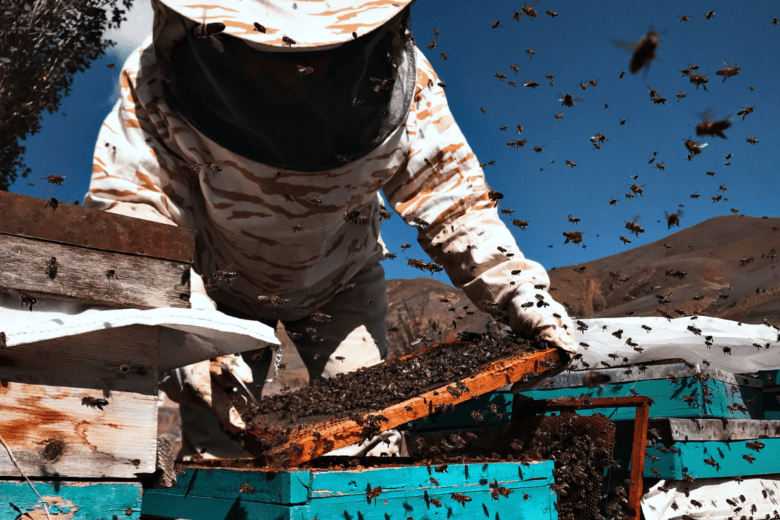Beekeeping, or apiculture, is an ancient practice with deep roots in human history. It involves the care and management of honeybees to produce honey, beeswax, and other products, while also playing a crucial role in the ecosystem through pollination. This time-honored tradition not only supports biodiversity but also provides numerous benefits to local communities and the environment.
In recent years, beekeeping has gained renewed attention as people become more aware of the importance of pollinators in agriculture and natural ecosystems. Honeybees, in particular, are vital for the pollination of many crops and wild plants, making them indispensable for food security and biodiversity.
For those embarking on their beekeeping journey, understanding and acquiring the right equipment is essential for success. Whether you are a hobbyist beekeeper or looking to expand into a more professional operation, having the proper tools and gear is crucial for maintaining healthy bee colonies and ensuring a productive harvest.
This guide will introduce you to the essential equipment needed for beekeeping. From protective clothing to hive components and honey extraction tools, we will cover everything you need to know to get started and thrive in this rewarding and environmentally impactful practice. Let’s dive into the world of beekeeping and explore the equipment that will support you in nurturing these incredible pollinators.
Protective Clothing and Equipment
Importance of Safety in Beekeeping
Safety is paramount in beekeeping, not just for the well-being of the beekeeper but also for the health of the bee colony. Honeybees can become defensive when they feel threatened, and proper protective gear minimizes the risk of stings and allergic reactions. Ensuring safety through appropriate equipment allows beekeepers to work more confidently and effectively.
Types of Protective Clothing and Gear
1. **Beekeeping Suit**: A full-body suit is essential for comprehensive protection. It typically includes a hat with a veil to shield the face and neck from stings. Made from breathable material, the suit offers comfort during extended periods of work while keeping bees at a safe distance.
2. **Gloves**: Beekeeping gloves are designed to protect hands and wrists. They are usually made from leather or synthetic materials, providing flexibility and protection. Choose gloves that offer both comfort and dexterity to handle the hive components effectively.
3. **Veil**: A beekeeping veil is an important accessory that protects the face and neck. It can be attached to a hat or integrated into a suit. The veil is made of fine mesh to keep bees away while allowing clear visibility.
4. **Boots**: Sturdy, high-top boots are recommended to protect the feet and lower legs. They should be made of durable, waterproof material to withstand outdoor conditions and prevent bee stings.
Hives and Their Components
Types of Hives
1. **Langstroth Hive**: The most common type of hive, the Langstroth hive, is known for its modular design. It consists of stackable boxes, or supers, which are easy to expand as the colony grows. This hive design facilitates honey extraction and colony management.
2. **Top-Bar Hive**: The Top-Bar hive is a more natural approach to beekeeping, with horizontal bars where bees build their comb. This hive type is often favored by those interested in organic or sustainable beekeeping practices.
3. **Warre Hive**: Known as the “people’s hive,” the Warre hive mimics a natural bee habitat with vertical stacking. It is designed to be less intrusive and more aligned with the bees’ natural behaviors.
**Main Components of a Hive**
1. **Brood Boxes**: These are the lower sections of the hive where the queen lays eggs and the colony raises its brood. They contain frames for the bees to build their comb.
2. **Supers**: Located above the brood boxes, supers are where honey is stored. They can be removed for honey extraction.
3. **Frames**: Frames are inserted into the hive boxes and hold the comb where bees build their honey and brood cells. They come in various sizes and types depending on the hive design.
4. **Screens**: Screens are used to separate hive components and can be helpful in managing pests and controlling hive ventilation.
Essential Tools
**Smoker**: A smoker is used to calm the bees by producing smoke, which masks alarm pheromones. Regular maintenance of the smoker, such as cleaning and refueling, ensures its effectiveness during hive inspections.
**Hive Tool**: The hive tool is a versatile instrument used to pry apart hive components, scrape off propolis and wax, and assist in general hive management. Different designs, including flat or curved blades, offer various functions.
**Bee Brush**: A bee brush is used to gently remove bees from frames or other surfaces. It is essential to use a soft-bristled brush to avoid injuring the bees.
Feeding Equipment
Types of Feeders
1. **Entrance Feeders**: These feeders are placed at the hive entrance and allow bees to access the feed while minimizing disturbance.
2. **Top-Feeders**: Placed on top of the hive, these feeders provide easy access for bees and reduce the risk of robbing by other bees.
3. **Jar Feeders**: Simple and effective, jar feeders are used for small-scale feeding. They can be placed directly on the hive or in a feeding station.
**Importance of Supplemental Feeding**
Supplemental feeding is crucial, especially during times when natural food sources are scarce. It helps maintain hive health, supports colony growth, and ensures adequate honey stores for winter.
Honey Extraction Equipment
Extractors
1. **Manual Extractors**: These are operated by hand and are ideal for small-scale operations. They use centrifugal force to extract honey from the comb.
2. **Electric Extractors**: Suitable for larger operations, electric extractors provide faster and more efficient honey extraction with minimal effort.
**Uncapping Knife**: The uncapping knife is used to remove the wax cappings from honey-filled frames before extraction. Heated knives can speed up the process and improve efficiency.
**Strainers and Filters**:
1. **Strainers**: Used to remove larger particles and debris from the honey during extraction.
2. **Filters**: Fine filters are employed to ensure that the honey is free from small wax particles and impurities.
Storage and Packaging
Honey Storage Containers
1. **Buckets**: Used for bulk honey storage, buckets with airtight lids help preserve honey quality and prevent crystallization.
2. **Jars**: For retail purposes, honey is often stored in jars. Choosing high-quality, food-safe jars ensures the honey remains uncontaminated.
**Labels and Packaging**: Proper labeling and packaging are essential for marketability. Labels should include product information, such as honey type, origin, and any certifications.
Monitoring and Maintenance Equipment
Inspection Tools
1. **Magnifying Glasses**: Useful for closely examining bees and hive components for signs of disease or pests.
2. **Lights**: Headlamps or other light sources help in inspecting the hive, especially during evening or early morning inspections.
**Record-Keeping Equipment**:
1. **Field Notebooks**: Used for logging observations, hive conditions, and management practices.
2. **Apps**: Various mobile apps are available to assist with hive management, tracking inspections, and recording hive data.
Queen Rearing Equipment
**Queen Cages**: Used to safely transport and introduce new queens into a colony.
**Queen Marking Tools**: Special markers are used to color-code queens for easy identification.
**Queen Incubators**: Provide controlled conditions for rearing and nurturing queen larvae until they are ready to be introduced into hives.
Ready to Begin Your Beekeeping Journey
As we wrap up this guide on essential beekeeping equipment, it’s clear that the right tools and gear are fundamental to a successful beekeeping experience. From protective clothing and hive components to extraction tools and monitoring equipment, each piece of equipment plays a crucial role in maintaining a healthy and productive bee colony.
Investing in high-quality equipment not only enhances your efficiency but also ensures the well-being of your bees. Proper protective gear keeps you safe from stings, while well-designed hives and tools facilitate easier management and honey extraction. Additionally, the right feeding, storage, and queen-rearing equipment contribute to the overall health and productivity of your hives.
For those embarking on the journey of beekeeping, the initial investment in quality equipment can seem daunting, but it is an investment in the long-term success and sustainability of your beekeeping venture. Quality tools and gear make hive management more straightforward and enjoyable, allowing you to focus on the rewarding aspects of beekeeping, such as observing bee behavior and enjoying the fruits of your labor.
Remember, beekeeping is not just about collecting honey; it’s about supporting vital pollinators and contributing to ecological balance. By equipping yourself with the best tools and gear, you set the foundation for a thriving beekeeping practice that benefits both you and the environment.
So, prepare yourself with the right equipment, stay informed, and enjoy the fascinating world of beekeeping. Your bees will thank you, and your beekeeping journey will be all the more fulfilling. Happy beekeeping!

Hi, I’m James Stevan, an avid beekeeper with over a decade of experience in apiculture. My passion for bees drives me to share practical tips and insights on sustainable beekeeping. Join me as we explore the fascinating world of bees and their crucial role in our ecosystem.




